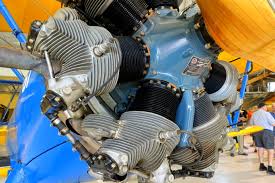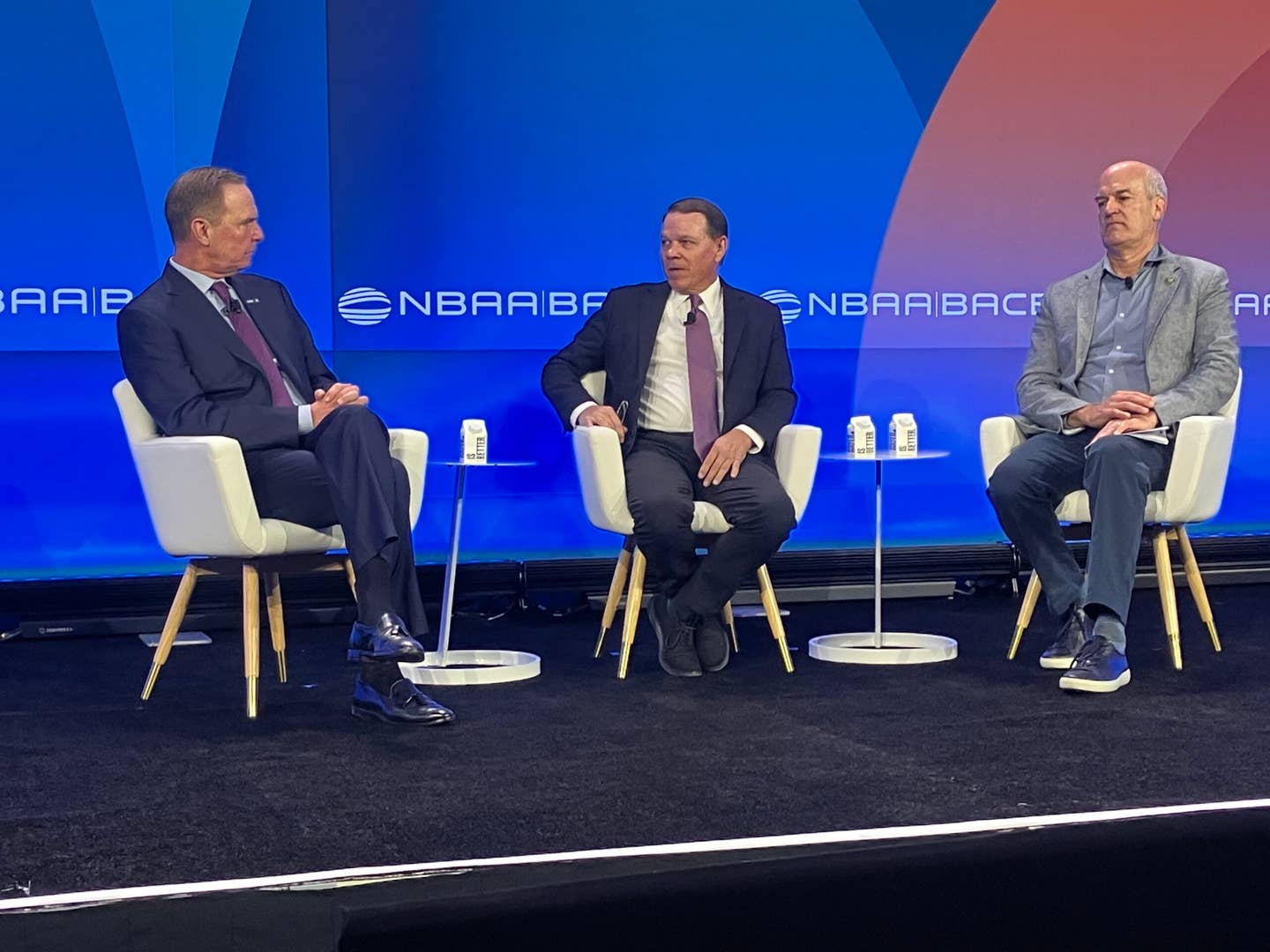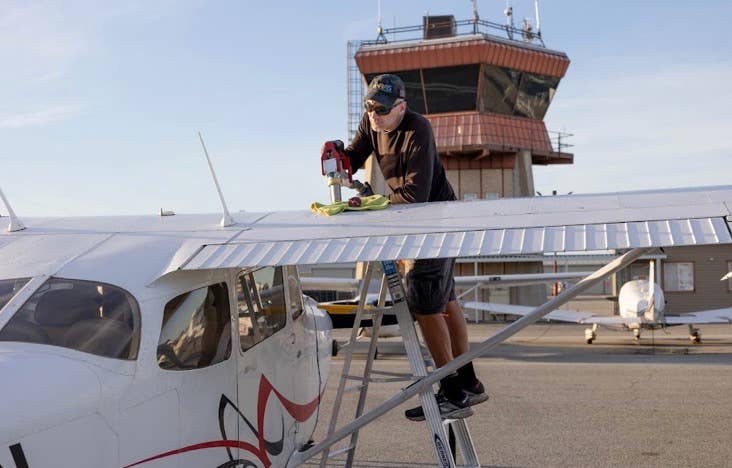Can There Be This Many Engines?
Aviation has its share of really weird engines. Probably a lot more than you ever realized.

I occasionally delight and shock my non-aviation friends with short, expletive-laden descriptions of airplane engines having changed little since VE day. In some ways, they’ve gotten a little worse. “Wait, you mean they have pushrods and carburetors? How can that be true?”
It is true, of course, unless you fly one of the new-tech diesels with that great leap into the internal combustion wonderland, overhead cams. Even Rotax engines, which emerge from a factory building gazillions of bleeding-edge motorcycle engines, still have pushrods. It’s also true that along with pushrods, in aviation, we tend to cling to the principle that it’s better to have small numbers of a lot of different things than big numbers of the same thing.
This is why we are so skilled at keeping aviation unaffordable to the mere peasants whose hearts burn to soar with the eagles, but whose lives are made aeronautically dreary by our uncommon ability to exterminate economy of scale should it even suggest itself.
It’s also how we periodically amuse ourselves with quality control disasters. It’s a known principle of manufacturing that if you build only 10 ZF-12-HB crankshafts, two will have off-spec number 2 journals, but you won’t know which two, so all will have to be recalled, grounding the airplanes for 18 months.
But I’m falling into my typical dark vortex of doom here, even as I try on a rainy morning to write an uplifting commentary on the wonders of aviation in the age of the plague. Standby, I’ve got one knee up over the edge of the crater and have a tiny nugget in sight. It’s a question. How many different aircraft engine manufacturers do you think are on the FAA registry? I’m not talking about engine types, say the difference between an IO-360 and an IO-540, but actual named engine companies.
I would have guessed about 50 or 60, when you consider the sparse uplands beyond the dense forest of Lycoming, Continental, Pratt, Wright and so on and you encounter the Kinners, the Franklins and the Warners. The actual number is 212, which includes a smattering of experimental engines.
This obscure fact was unearthed by my friend Todd Huvard, of Aircraft Merchants, who crunched the date for me on an article about engine failures. We both thought that this would be a simple job because there just aren’t that many engine varieties. This delusion belongs in the same file with the optimistic declaration that the war will be over by Christmas.
First, if you think Continental and Lycoming dominate the motive side of making things fly, you’re right. Bigly. Between the two of them, they have about 184,000 engines on the FAA registry. Lycoming has 52 percent of these, to Continental’s 48 percent. By comparison and even though the dollars are vastly larger, turbine and jet powerplants represent much smaller numbers. Adding up the CFMs, the GEs, the Rolls and Rolls-BMWs, the Garretts and even Pratt & Whitney with the prolific PT6, the total is under 40,000. (This is U.S. registry only, not world market.)
Sorting the numbers reveals why Lycoming and Continental are the king and queen of low-volume, high-mix manufacturing. Lycoming has a whopping 476 different model variations on the registry—there are 40 variants of the O-320 alone and 41 for the popular O-360. Many of these amount to little more than accessory case variations, but those model changes often include oddball things like different gearing or dimensional changes for critical parts that mean one crankshaft or crankcase won’t fit all of the models. It’s mass production on an insanely chaotic level.
Continental has less variation—233 type certificates on the registry. This is probably because Continental traditionally earned its high-volume bread and butter with large displacement engines such as the O-470 and O-520 series which didn’t have the variety of Lycoming’s line. Also, although it has its GTSIO engines, Continental doesn’t have designated helicopter and aerobatic engines, as Lycoming does.
Lycoming has some oddball designations, too, such as the YIO-360-M1. Huh? It’s an uncertified version of the O-360 for experimentals. How about the VO-540-C2A? It’s a vertically-mounted helicopter engine. Six of those are out there flying, or at least registered. There’s a TIVO-540, too. No, it doesn’t timeshift favorite TV shows; T is for turbocharger.
Both the Lycoming and Continental totals include radial engines. Surprisingly, Continental has the most, with almost 1100. Lycoming’s R-series show about 650 on the registry. The Continental W670—aka R-670—is the most numerous and you know it as the PT-17 Stearman powerplant. It was also used in the M3 Stuart tank during World War II. Lycoming’s big-volume radial is the R-680, with about 600 still on the books. It was used in the Beech AT-10 trainer and the Stinson Airliner, among others.
As with firearms and old cars, collectors probably drive the existence of some truly old and oddball engines. Aeronca—yes, the airframer—built its own engine before World War II, the E-113. In 1939—a year after my Cub flew out of Lock Haven—it was “modernized” with dual mags. More than 80 years later, 63 are still registered. Any flying? I’d love to know.
Another rarity is the Alvis 514 nine-cylinder radial developed in Great Britain before World War II. There are two of these on the registry, suggesting someone has either a Percival Pembroke or a Scottish Aviation Twin Pioneer, the airframes the Alvis was used in.
My colleague Paul Berge has actually flown a Funk, but I’ll wager that even he doesn’t know there are eight Funk E engines on the registry. It was developed from the Ford B automotive engine. There appear to be 89 Funks still on the FAA’s active list and although most have Continental engines, some have the original Funk. One is owned by the Coffeyville Aviation Heritage in Kansas.
There are even older engines still registered. The Hispano-Suiza was a hot number in 1914; still three on the records. How about the Packard Liberty L-12? At least seven of those still exist and their owners bother to keep them registered. While were talking Packard, there are 88 V1650s registered in the U.S., the very same ones that stand the hair on your neck up when they fly by at Oshkosh. These are the Packard-built World War II Merlins. (See how to start a Merlin in this week’s video.)
Some of the engines with just a handful of registrations may seem like long-forgotten relics, but they’re just the opposite. The Emrax 228, for example, is a liquid-cooled electric motor. (People in the business seem to prefer calling them engines.) There are two of these registered. Siemens (now Rolls), on the other hand, has 11 of its electric engines officially registered.
And yet there are puzzlements. How can there be 14 Porsche PFM 3200s still alive? Mooney and Porsche want to forget these and actively encouraged owners to re-engine the ill-starred Mooney M20L. In 1985, both companies thought Porsche’s high-performance, air-cooled six-cylinder engine would be a perfect fit for the new long-body airframe. It turned out to be a hot mess, but evidently one that 14 owners still kind of like. Or haven’t found a way to clean up.
Speaking of messes and aviation’s tendency to keep them around with STCs, mods, ADs and field expediency, I thought I would find at least one shining example of one of aviation’s exceptional duds: The Continental Tiara engine. This one was developed during the 1960s in four-, six- and eight-cylinder versions. The engines were high-revving, vibey and fuel thirsty and, evidently, no one liked them much. It’s sad testament to their badness that not even one stalwart collector would step forward to keep one on the registry, once again proving why aviation actually is sometimes justified in proving itself the backwater it appears to be. We tend to stick with what works because all too often, the new stuff we try doesn’t.






